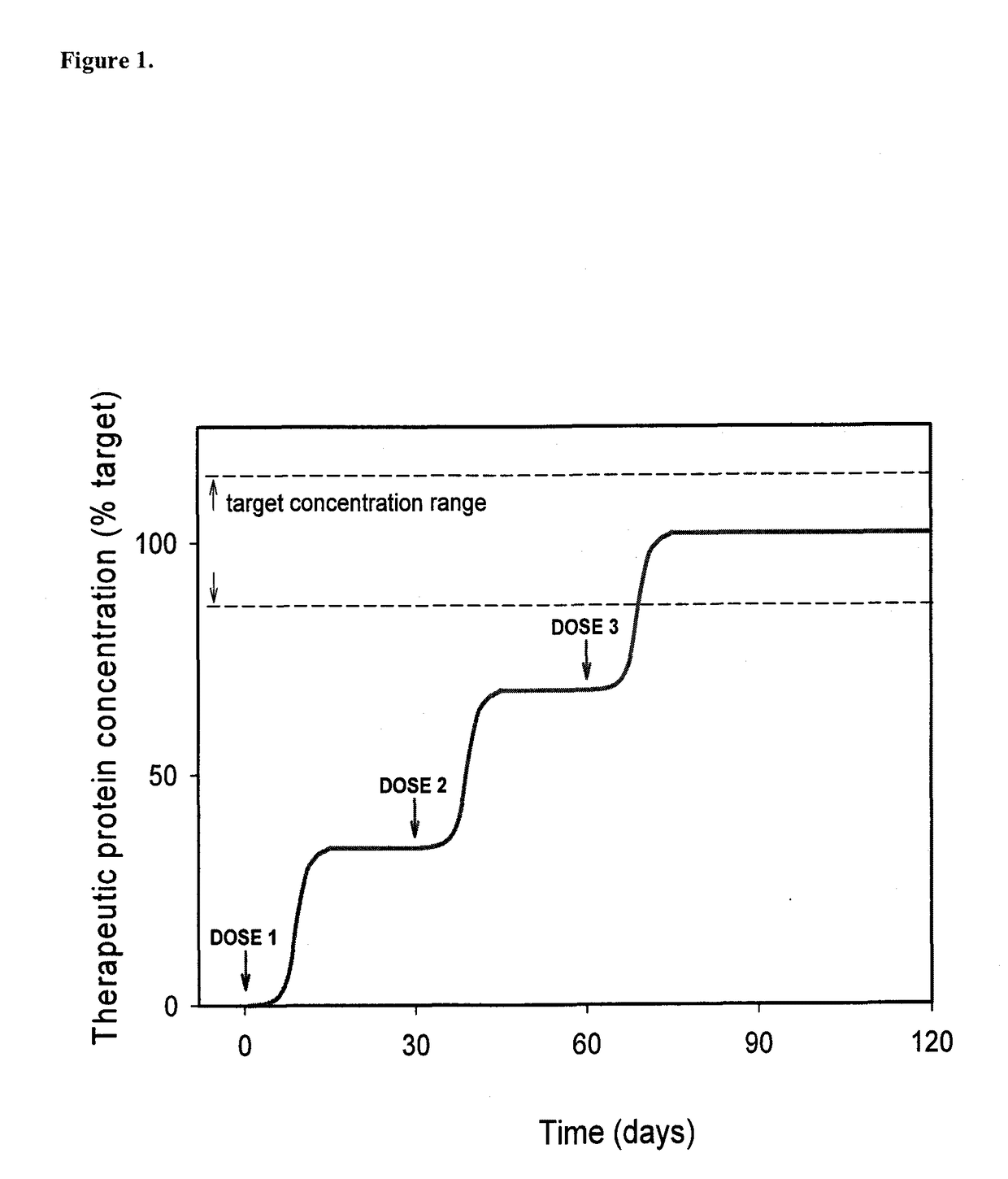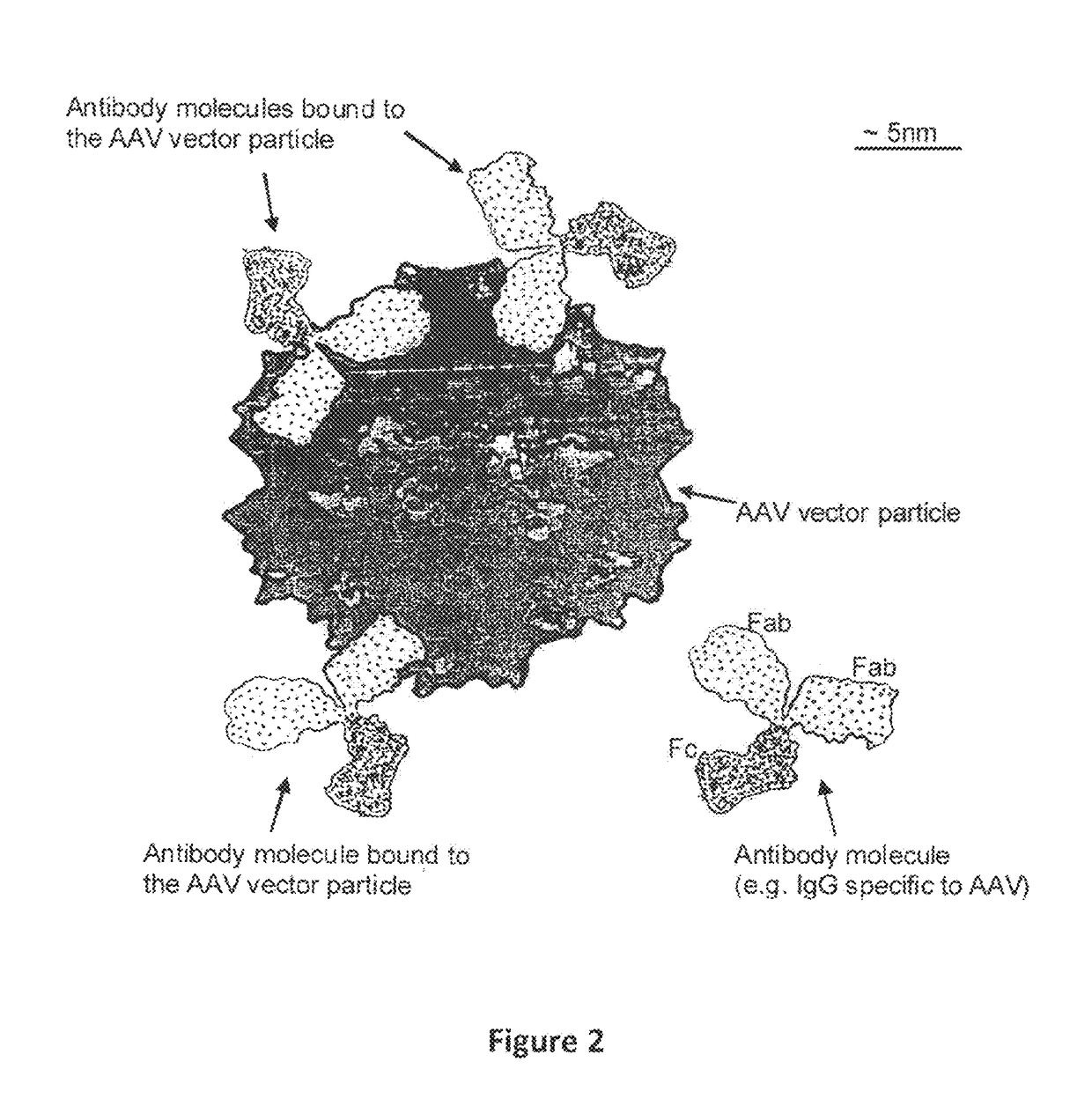Humanized Viral Vectors and Methods of Use Thereof
a technology of humanized viral vectors and vectors, applied in the field of gene therapy and molecular biology, to achieve the effect of reducing antibody mediated clearance and immune responses, and improving efficiency and consistency
- Summary
- Abstract
- Description
- Claims
- Application Information
AI Technical Summary
Benefits of technology
Problems solved by technology
Method used
Image
Examples
example 1
[0084]In the present example, the generation of AAV vectors that are covalently coated with HSA such that most or all antibody binding sites are masked is described.
[0085]Covalent Cross-Linking of Vector and HSA.
[0086]Appropriate cross linking agents have been developed and described to achieve attachment of two different proteins, and methods of use of such agents is well known to the skilled artisan. For example, certain heterobifunctional cross linking reagents could be used to form a covalent linkage between Cys34 of HSA with lysine residues that are present on the surface of purified AAV2. Heterobifunctional cross linking agents and methods of using the same are commercially available from Pierce. Covalent crosslinking of HSA to rAAV2 is advantageous in that the complexes, once formed, are stable.
[0087]AAV2-LacZ Preparation and Titering.
[0088]Recombinant AAV2 expressing the LacZ under the control of the CMV promoter was generated using helper virus free transient transfection o...
example 2
[0100]In this example, the generation of AAV vectors that are modified with an AAV binding ligand such that most or all antibody binding sites are masked is described.
[0101]Covalent attachment of an AAV2 binding ligand, such as heparin to HSA is performed. HSA can be modified by attaching a ligand that is known to bind to the surface of AAV2 vectors (e.g., heparin). It is known that AAV2 has binding sites for heparin (60 sites per AAV2 particle). Thus, covalent attachment of heparin to purified HSA can be achieved such that one HSA molecule has one attached heparin molecule. It is most preferable that only one heparin molecule be attached to each HSA molecule, because attachment of 2 or more heparin molecules per HSA would lead to HSA derivatives that would be expected to bind more than one vector particle and thereby lead to vector aggregation. Therefore attachment of heparin to a unique site (e.g. Cys34) on HSA provides a suitable mono-heparin HSA derivative to generate the huAAV2...
example 3
[0114]In an alternative approach, modification of the vector surface by attaching small ligands to the vector surface that are known to bind HSA may be employed. AAV2 vectors derivatized with such ligands could be mixed with HSA, which would then bind in a non-covalent manner. For example, it is known that HSA has a high affinity binding site for certain fatty acids (reviewed in Peters (1996)). Fatty acids could be covalently attached to the surface of AAV2 vectors, and the vectors then incubated with purified HSA under conditions to allow non-covalent binding of HSA to the fatty acids molecules. For example, acylation of the epsilon amino groups of lysine residues to attach long fatty acyl residues to proteins has been described (Plou et al. (1994)). To make huAAV2 vectors using this strategy, long chain fatty acids (eg. palmitoyl chloride) or other relevant fatty acid like molecule could be attached covalently to some (or all) of the approximately 420 Lys residues that are exposed...
PUM
| Property | Measurement | Unit |
|---|---|---|
| Size | aaaaa | aaaaa |
| particle radius | aaaaa | aaaaa |
| size | aaaaa | aaaaa |
Abstract
Description
Claims
Application Information
 Login to View More
Login to View More - R&D
- Intellectual Property
- Life Sciences
- Materials
- Tech Scout
- Unparalleled Data Quality
- Higher Quality Content
- 60% Fewer Hallucinations
Browse by: Latest US Patents, China's latest patents, Technical Efficacy Thesaurus, Application Domain, Technology Topic, Popular Technical Reports.
© 2025 PatSnap. All rights reserved.Legal|Privacy policy|Modern Slavery Act Transparency Statement|Sitemap|About US| Contact US: help@patsnap.com



